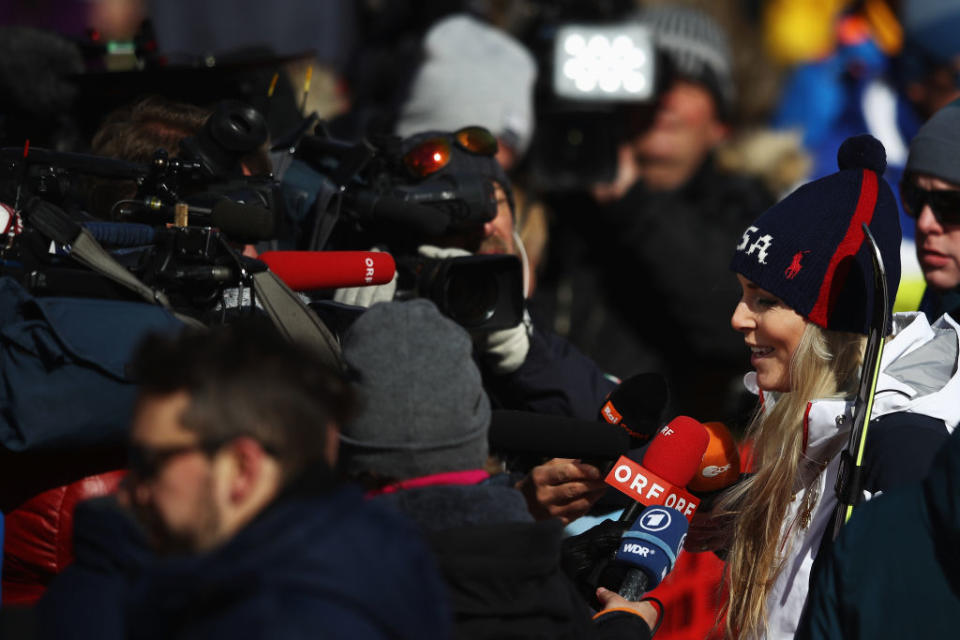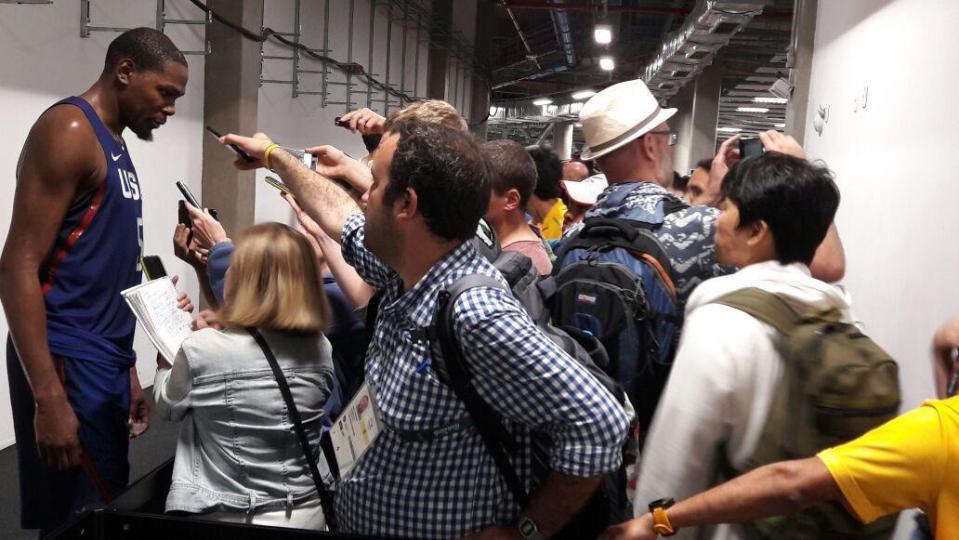Olympics behind the scenes: The Mixed Zone
PYEONGCHANG, South Korea — It’s one part therapist’s couch, one part cattle chute, and one part MMA octagon. It’s the Mixed Zone, it’s where you hear from your favorite Olympians moments after they’re off the slopes or the ice, and it’s unlike anything else in sports.
The appetite for Olympic content, be it video, audio, or text, dwarfs that of any other sporting event on earth. This year, the IOC credentialed 13,000 journalists, editors, camera operators, and associated support staff with the express purpose of spreading the message of the Games far and wide. But getting athletes to discuss their hopes and frustrations on-camera is getting more difficult with each passing year.
“Other than press conferences, the Mixed Zone is the only chance the media has to talk to these athletes. That’s why it’s really important,” says IOC media operations consultant Susan Polakoff. With 15 Olympics on her resume and the past 12 years with the IOC, she’s described, depending on who’s doing the describing, as the “Mixed Zone Queen,” the “Mixed Zone Maven,” or — on occasion — the “Mixed Zone Bitch,” and she runs as tight a zone as you can find.

“The Mixed Zone is less than ideal,” Polakoff allows. “There’s [usually] no locker room at the Olympics. You have to do this on the field of play. It’s loud, crowded, and uncivilized. It’s dog-eat-dog, and it can get pretty hairy in there.”
Let’s start with the name, which is a misnomer in itself. The “Mixed Zone” is actually a highly stratified caste system of media, with rights-holding broadcasters (like NBC, which pays for the rights to broadcast) coming first, followed by rights-holding media organizations, and finally non-rights-holding media.

Athletes shuttle through a series of fenced runs, passing each organization in turn. The athletes don’t have to speak to the media, but they do have to appear. And the competition to jostle for position and get a quote from a notable athlete — which can be anyone from Shaun White to the Tongan flag-bearer — means that there are plenty of stomped toes and jabbed ribs among the media.
“I’ve had fences collapse” from the weight of media, Polakoff says, and if you’ve seen many media members up close, you know what a terrifying prospect that could be. “In Beijing (2008), volunteers had to sit with their backs against the fences to hold them up.”
One of the main problems with the Mixed Zone is, of course, the media itself. Differing geographic locales have different standards of behavior for media. While most reputable North American media members won’t pose for selfies or ask for autographs, other regions’ reporters have no such qualms doing just that. “One time, Usain Bolt took three hours to get through the Mixed Zone,” Polakoff says. “It’s because he was talking to everyone’s mom back home on their phones!”

Strangely, given the cattle-call nature of the Mixed Zone, professional athletes accustomed to more formal settings seem to enjoy the more relaxed atmosphere. LeBron James and Kevin Durant both appreciated the go-here formalism of the Zone, while Serena Williams enjoyed not having to do a full sitdown press conference after every match.
Of course, not every Mixed Zone experience goes quite so smoothly. “The worst was in Torino (2006),” Polakoff laughs. “The police would hang out in the athletes’ chutes in the Mixed Zone. Which is bad, but not terrible. What was worse: they brought their dogs in there with them, and the dogs were pooping all over the place! It was the lowest point of my career!”
It’s not perfect — not by a long shot — but for fans wanting instant reaction from their Olympic athletes, the Mixed Zone is what we’ve got. Keep your eyes open after events; you never quite know what you’ll see in there.
____
Jay Busbee is a writer for Yahoo Sports. Contact him at jay.busbee@yahoo.com or find him on Twitter or on Facebook.
More Olympic coverage from Yahoo Sports:
• Watch: First-person video shows you how fast downhill skiing is
• Busbee: Behind the scenes in the Olympic mixed zone
• Wetzel: Three falls beg question of what’s happened to USA figure skating
• NBC cuts into Olympic broadcast to show crazy car chase in L.A.
• Busbee: Military bonds four-man American bobsled team

